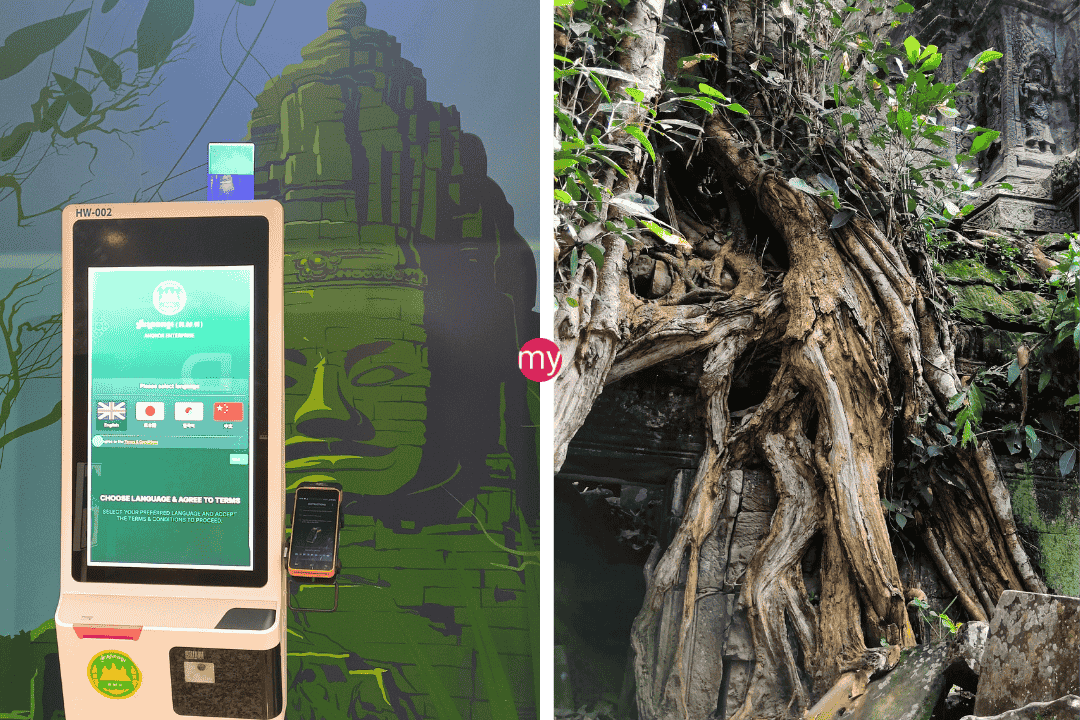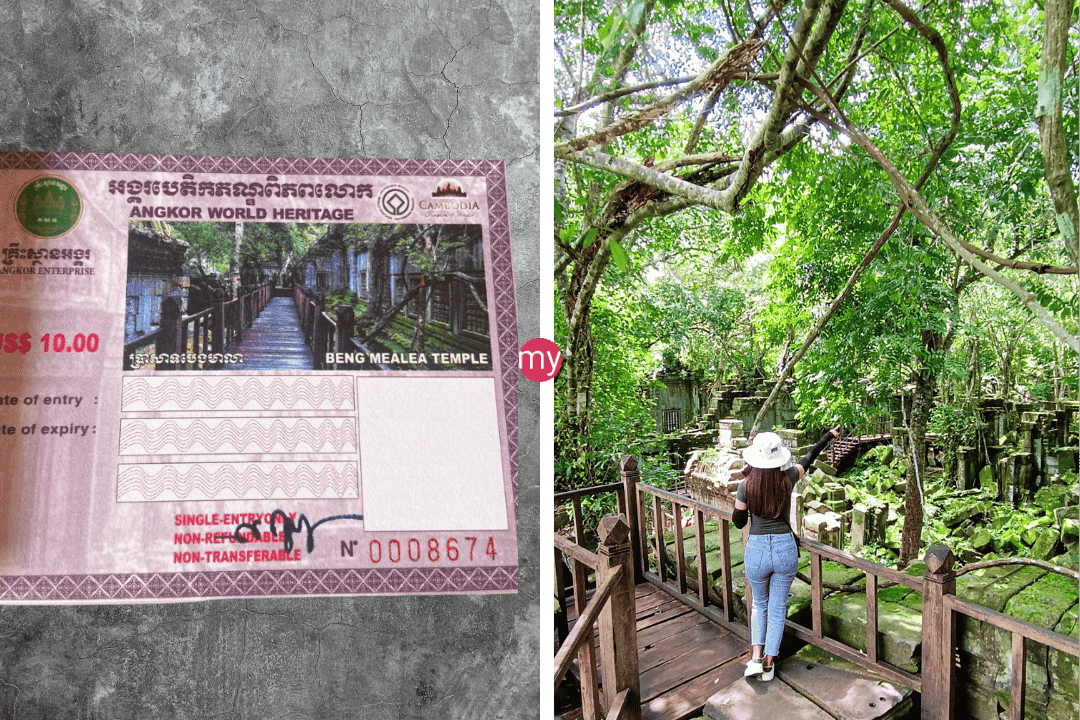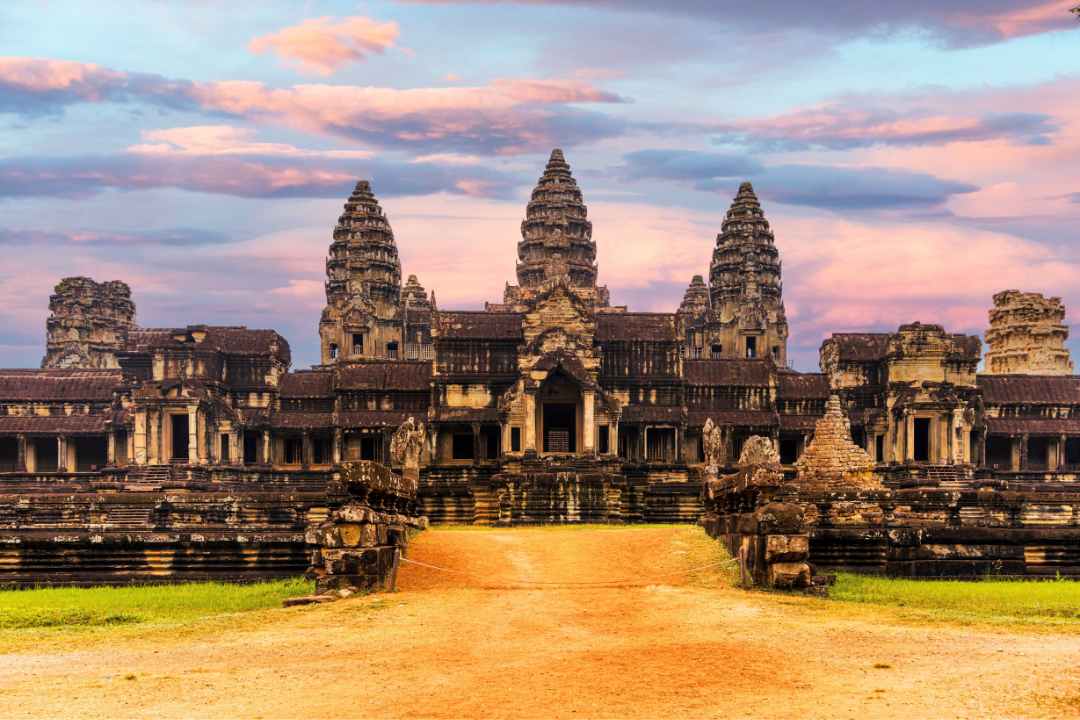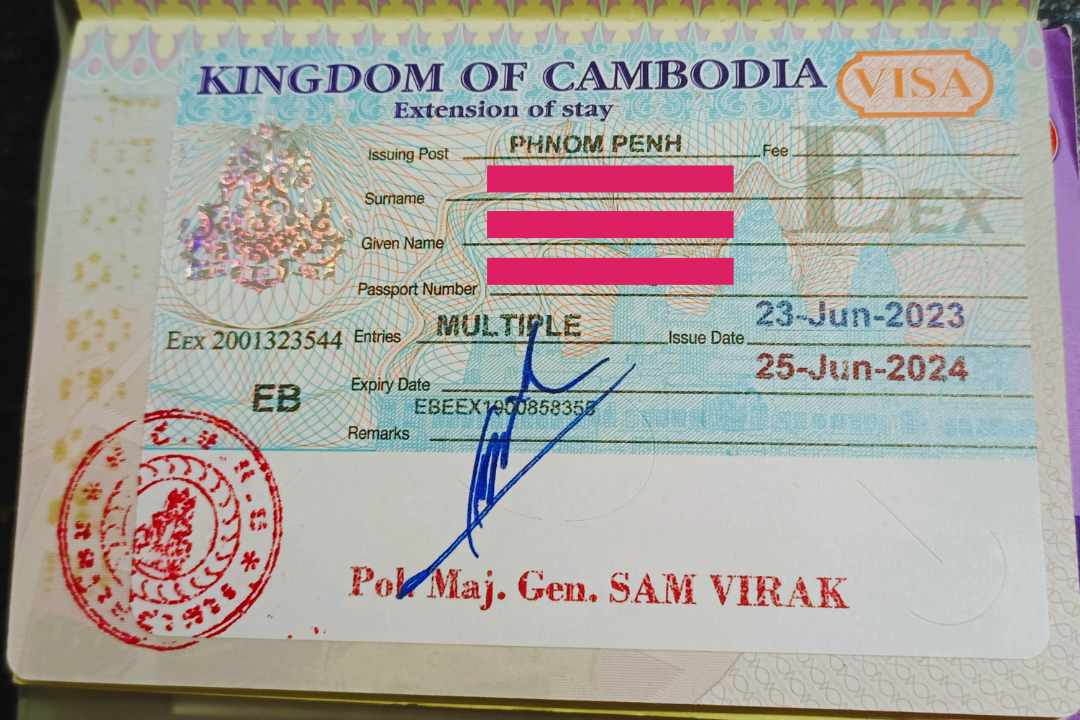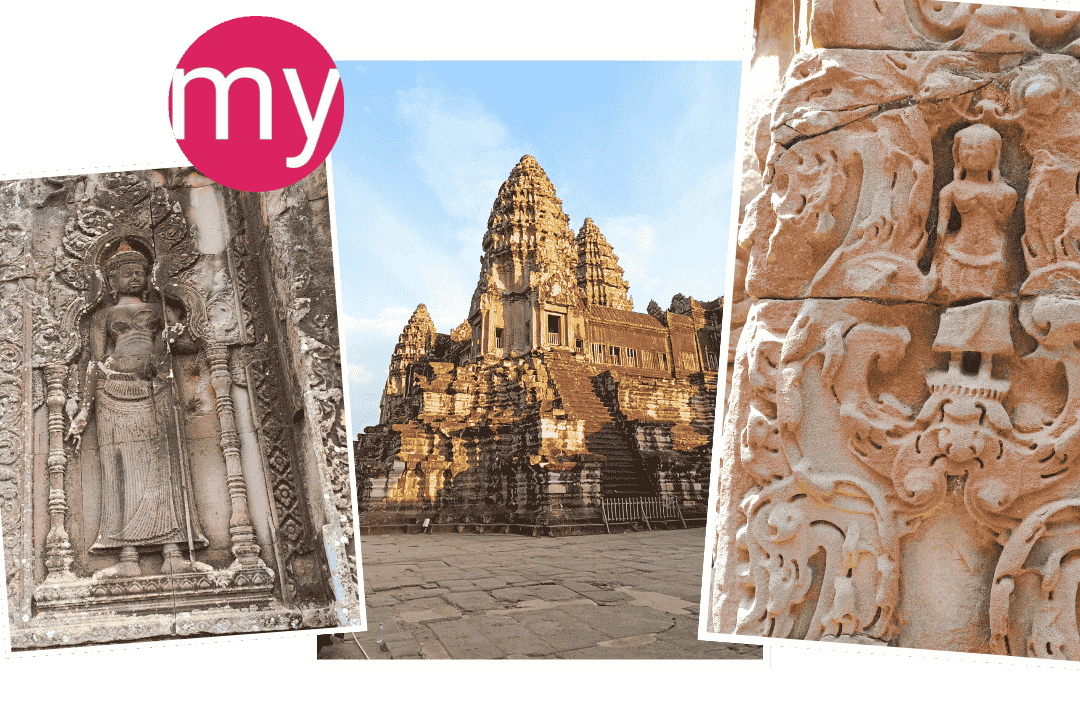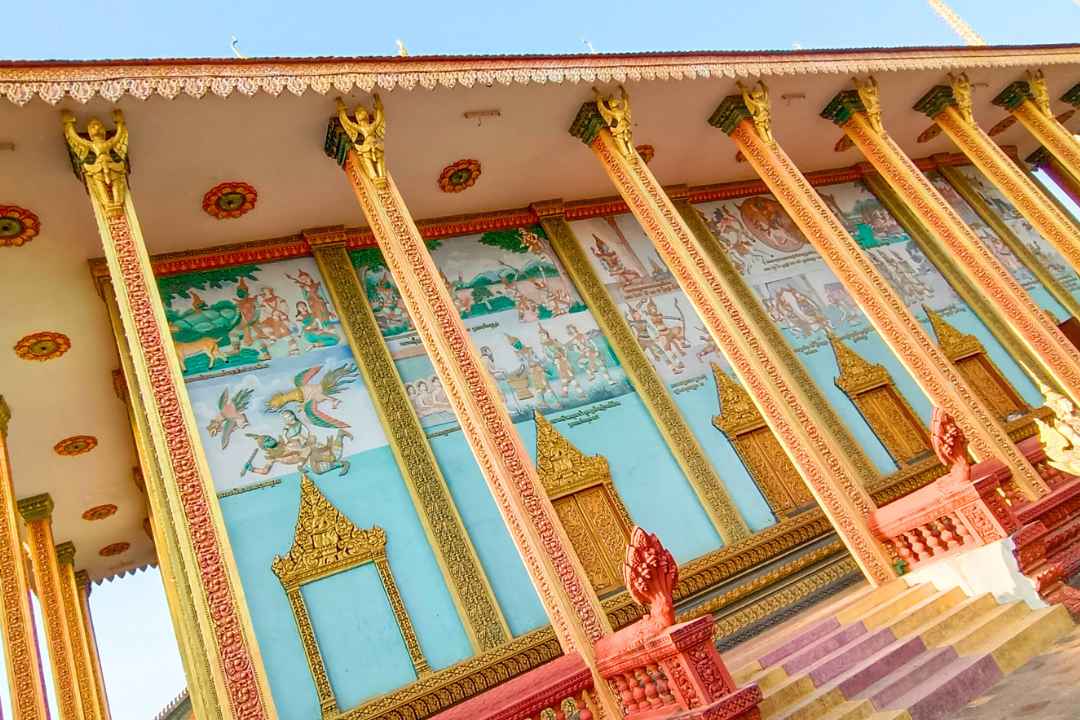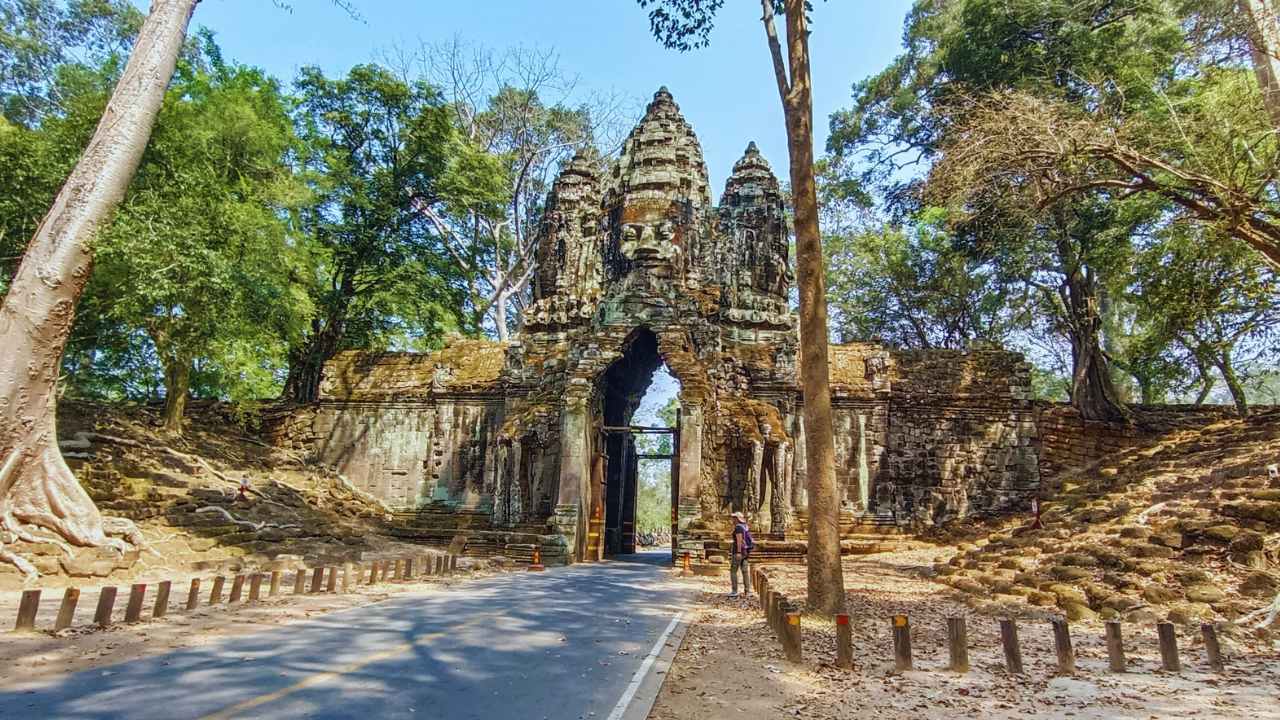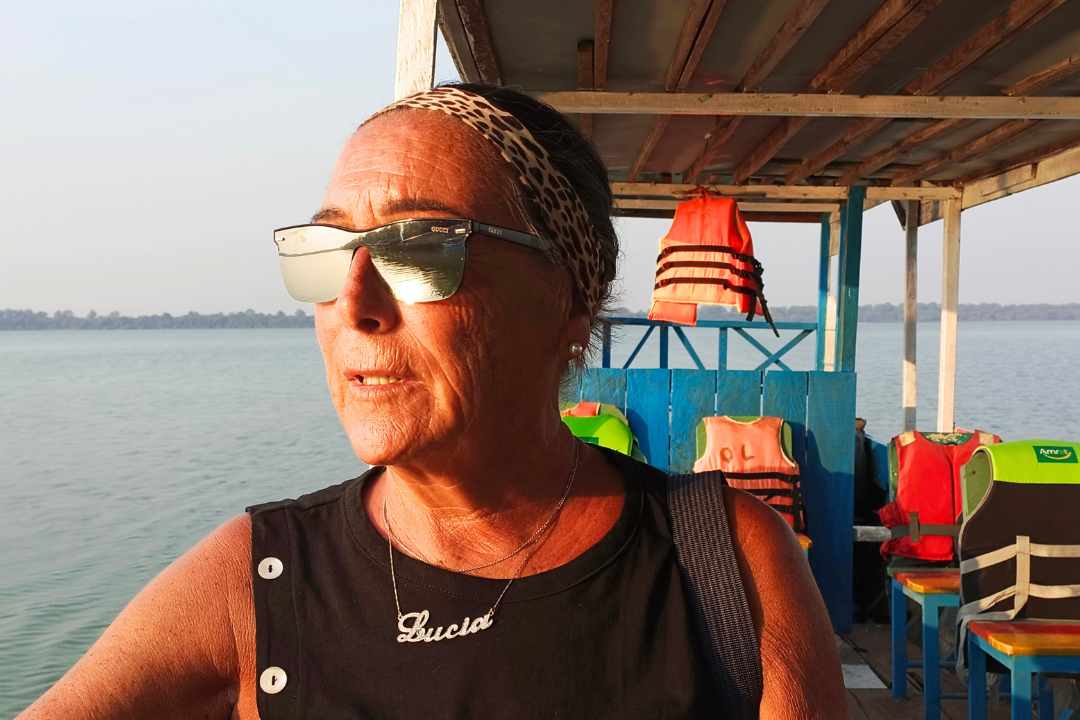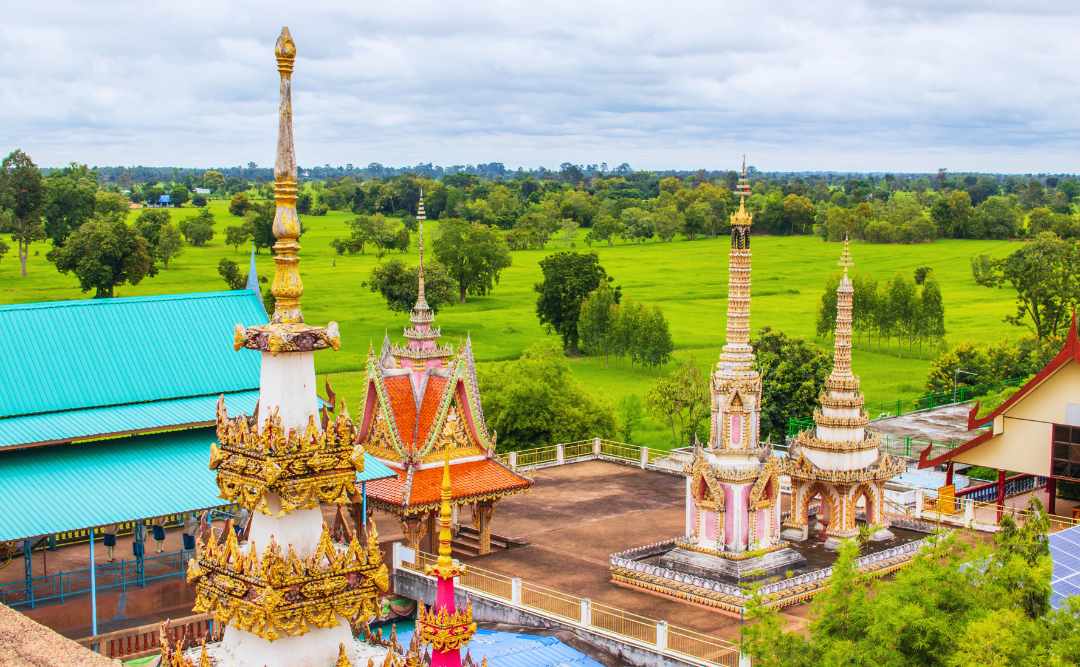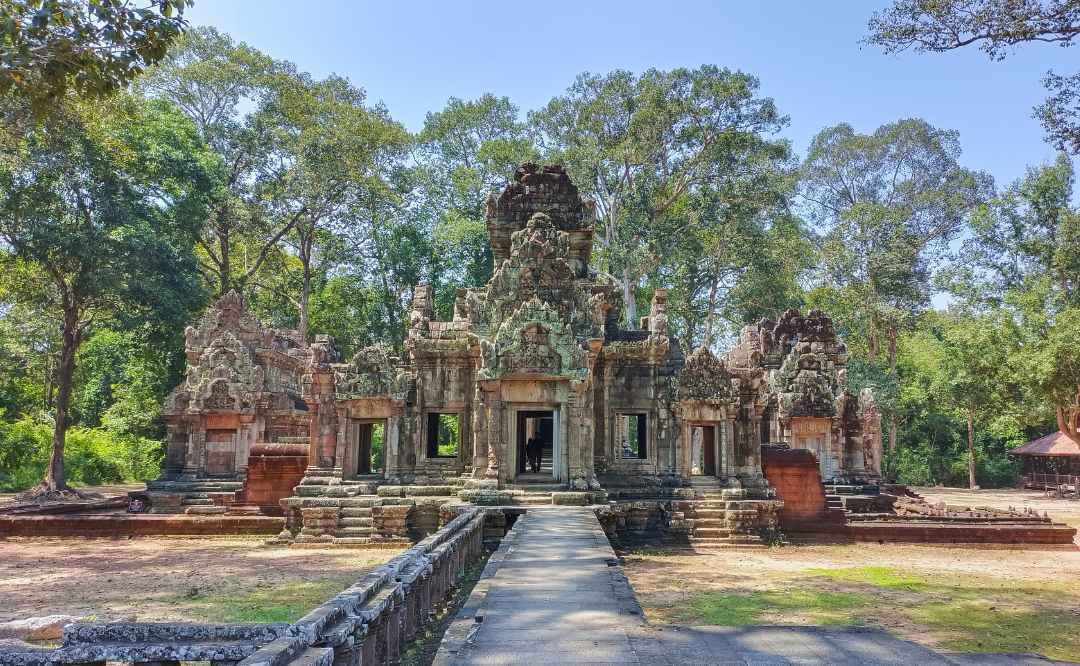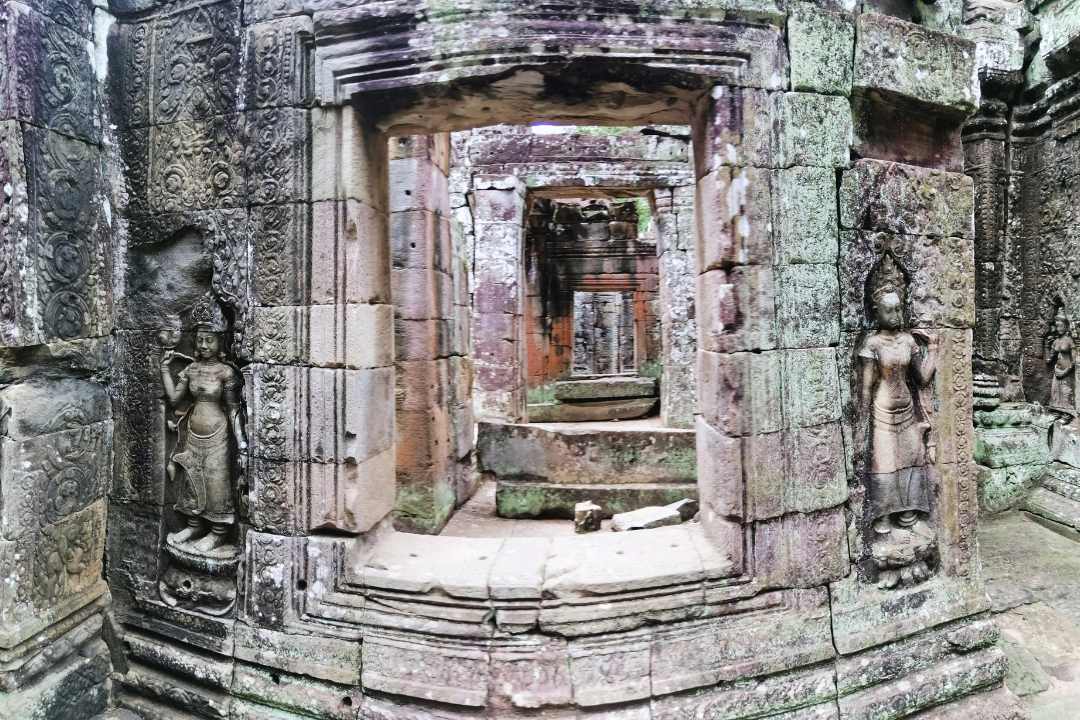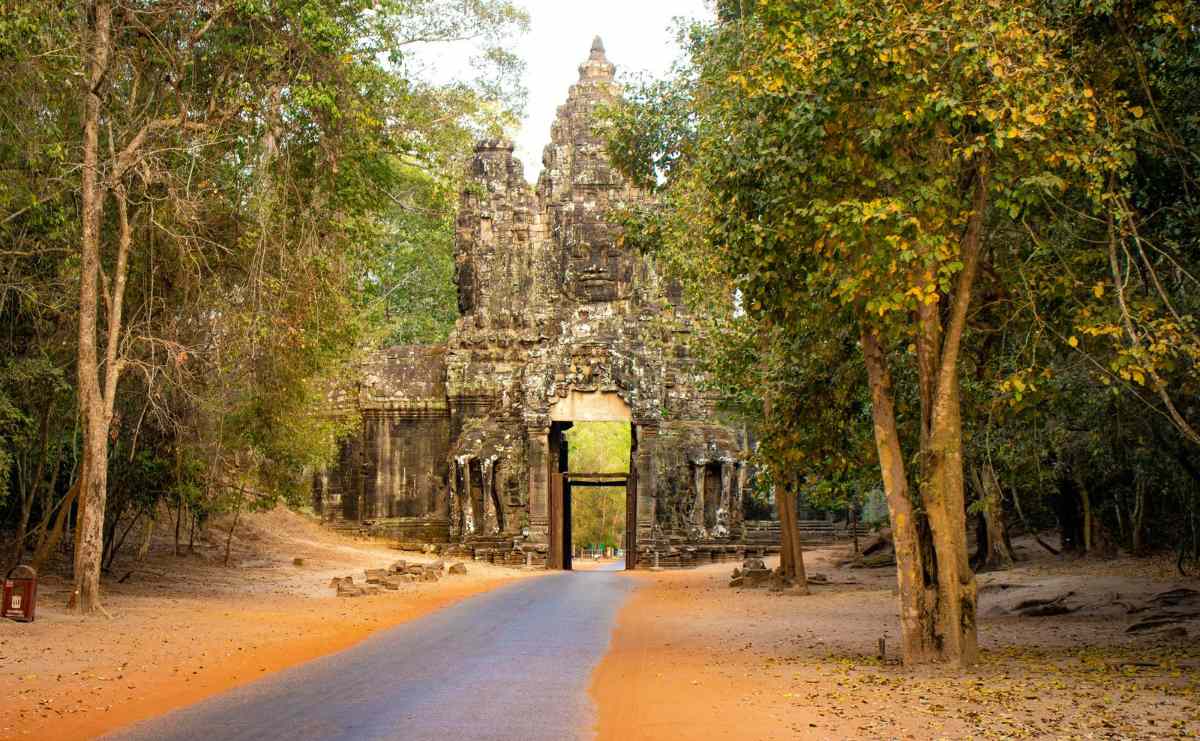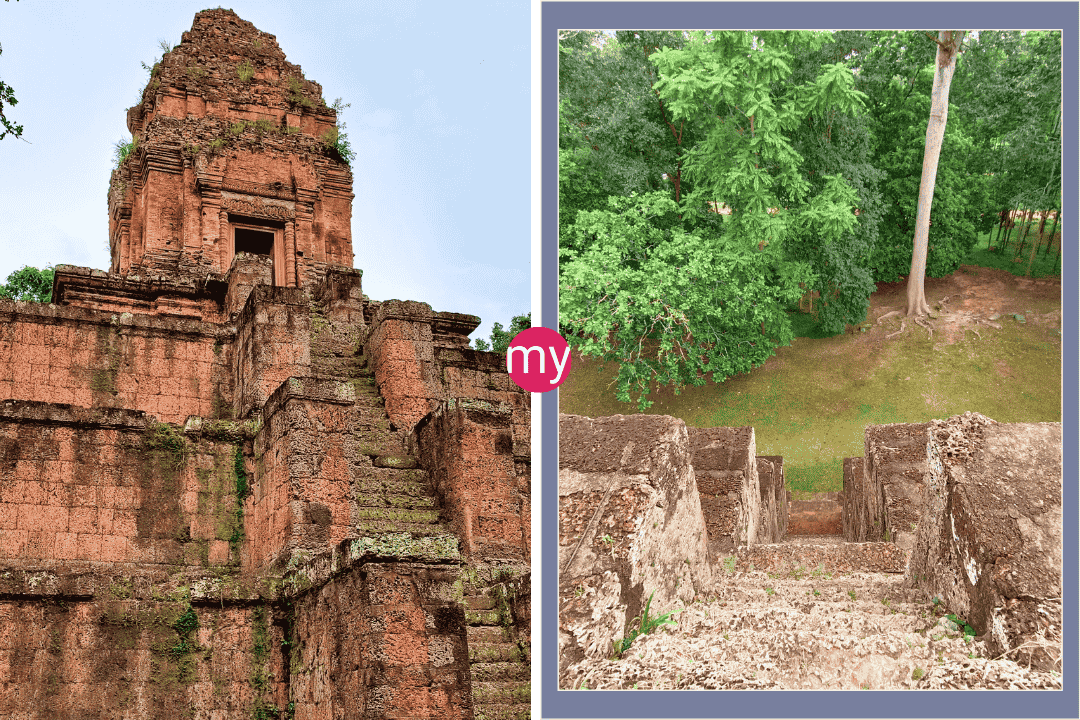Best Tours to Angkor Wat from Siem Reap in 2026 - What 2.7 Million Visitors Need to Know - Your Guide to Prices, Tips and Best Routes
How Smart Travelers from Siem Reap See 40% More Temples, Spend 60% Less Time Waiting, and Take Photos Everyone Else Misses Completely
Choosing the right tours to Angkor Wat from Siem Reap makes the difference between a rushed, crowded experience and a life-changing temple adventure. This guide breaks down every option—from sunrise tours ($24-$74 per person) to multi-day circuits—with honest pricing, insider timing strategies, and what 73% of travelers get wrong.
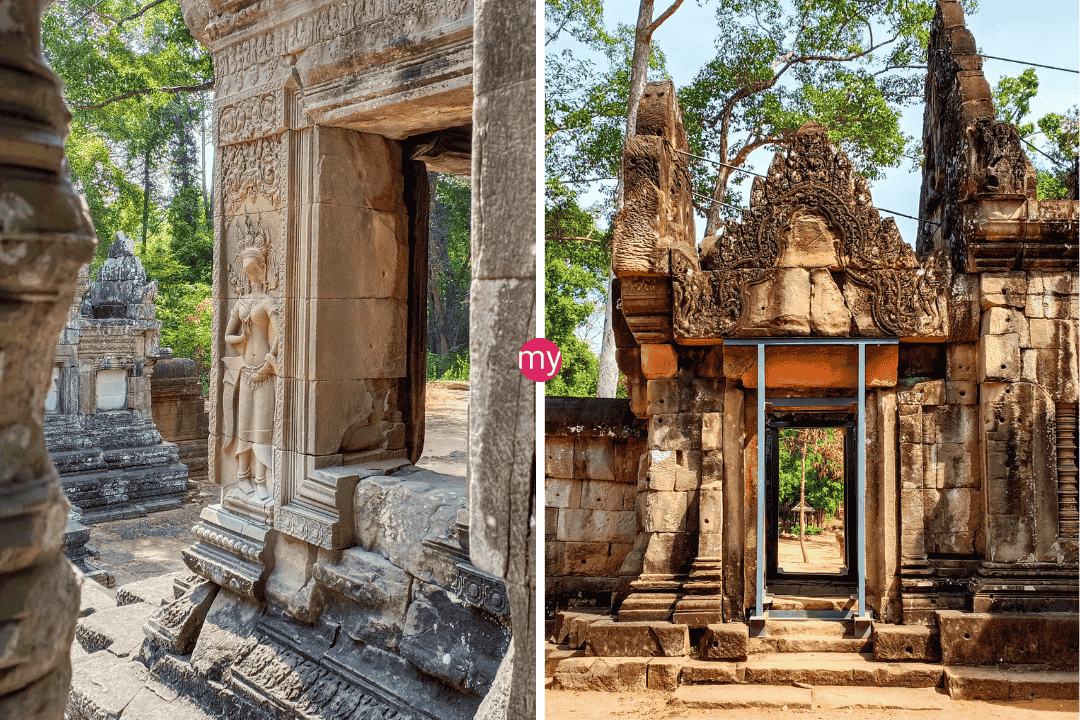
You’ll learn which tours of Angkor Wat from Siem Reap match your budget and interests, how to avoid crowds even during peak season, and booking tips that save you both time and money. Read on to pick your perfect Angkor experience in 2025.
After watching countless travelers make the same mistakes, I’ve learned that choosing the right tours to Angkor Wat from Siem Reap makes the difference between a bucket-list disappointment and a genuinely transformative experience.
Why Tours from Siem Reap Are Your Best Gateway to Angkor Wat
Siem Reap sits just 6 kilometers from Angkor Wat’s main entrance—making it the undisputed base camp for temple exploration. But distance isn’t the only advantage. This riverside town has evolved into a sophisticated hub where ancient history meets modern convenience.
The real question isn’t whether to book a tour. It’s which type transforms your visit from acceptable to extraordinary.
What Makes Siem Reap-Based Tours Different?
Local expertise you can’t Google. Temple guides from Siem Reap grow up in the shadow of these monuments. They know which bas-reliefs tell the Ramayana story, when restoration crews take their lunch breaks (the best time for unobstructed photos), and—most importantly—where 90% of tourists never venture.
That’s the insider knowledge you get with authentic Siem Reap tours.
Understanding Your Tour Options – Tours to Angkor Wat from Siem Reap: From Basic to Breathtaking
The Angkor Wat Sunrise Tour: Is 4 AM Worth It?
Let’s talk honestly about the most famous tour type. Yes, the Angkor Wat sunrise tour requires a brutal early wake-up. You’ll stumble into a tuk-tuk around 4:30 AM, half-asleep and wondering if you’ve lost your mind.
Then you see it.
The temple silhouette emerging against a sky painted in impossible colors. The reflection pool perfectly still. And suddenly those three hours of sleep feel completely irrelevant.
Here’s what tour companies often hide: The iconic sunrise spot by the north pond fills up fast—sometimes 500-800 people crowd the viewing area during peak season (December-February). But experienced guides know alternative positions that offer equally stunning views with a fraction of the crowds.
I recommend the private Angkor Wat sunrise tour option if you’re serious about photography or simply can’t handle being elbow-to-elbow with strangers at dawn. The price difference buys you flexibility to explore after sunrise without watching a group schedule.
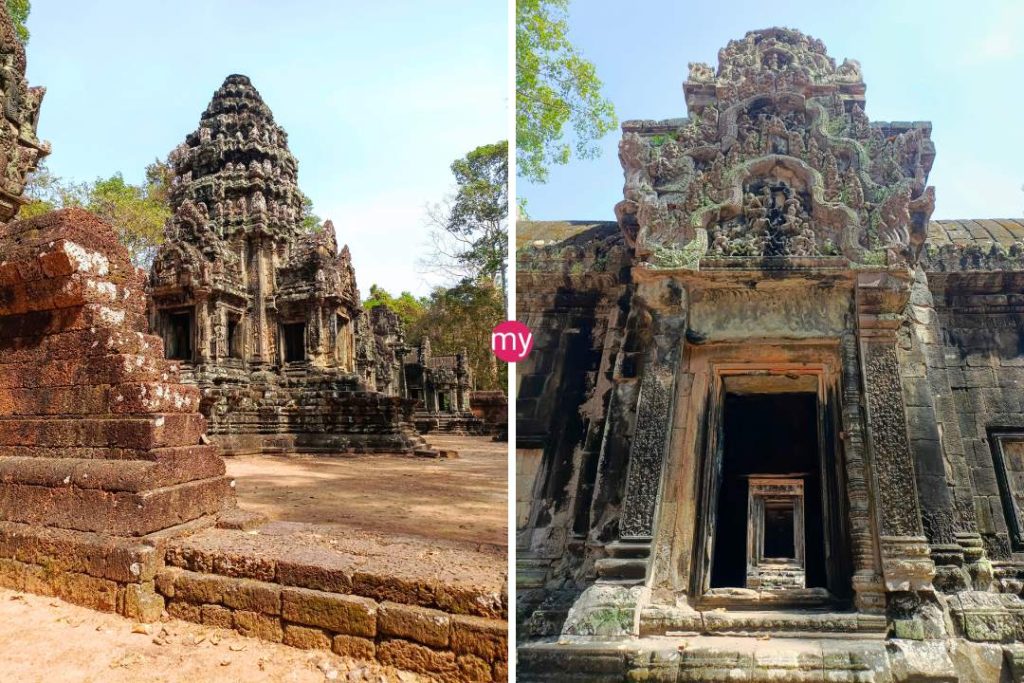
The Angkor Wat Small Circuit Tour: Maximum Temples, Minimum Fuss
The Angkor Wat small circuit tour covers 17 kilometers and typically includes 6-8 major temples. This is the most popular one-day itinerary—and for good reason.
Standard small circuit stops include:
- Angkor Wat (90-120 minutes)
- Angkor Thom and Bayon Temple (60-90 minutes)
- Ta Prohm, the “Tomb Raider temple” (45-60 minutes)
- Ta Keo pyramid temple (20-30 minutes)
- Banteay Kdei (optional 30 minutes)
But here’s where most tours fail you. They allocate the same amount of time to each temple, treating Angkor Wat—the world’s largest religious monument—as just another checkbox. The result? You rush through a structure that deserves hours, then spend too long at smaller temples that could be covered in 15 minutes.
A well-designed private tour from Siem Reap lets you adjust timing on the fly.
Fell in love with the Bayon’s 216 smiling faces? Stay longer.
Find Ta Keo’s steep stairs exhausting in the midday heat? Skip it and head somewhere shadier.
The sweet spot for most travelers is 2 days at Angkor Wat. This gives you enough time to see major temples without rushing, plus venture beyond the main circuit.
Day 1: Small circuit with sunrise at Angkor Wat
Day 2: Grand circuit + Banteay Srei
This pacing prevents temple fatigue—that glazed-over feeling when stone ruins all start looking identical. You maintain genuine enthusiasm because you’re not seeing 15 temples in 8 hours.
The Grand Circuit Tour: Beyond the Instagram Highlights
While everyone else queues for the same five temples, the Angkor big circuit tour takes you to the outer ring—26 kilometers covering lesser-known monuments that are, frankly, often more impressive precisely because they’re less restored.
Grand circuit must-sees:
- The mistical Banteay Srei
- Preah Khan: A sprawling monastic complex where nature and architecture wage their epic battle
- Neak Pean: The island temple that once served as an ancient healing center
- East Mebon: Five-meter-tall stone elephants guarding a former island temple
- Pre Rup: Sunset views that rival Angkor Wat (and with 95% fewer people)
The grand circuit works brilliantly as a second-day itinerary. After covering the “greatest hits” on day one, you’re ready for deeper exploration. My favorite approach? Combine a 2-day complete Angkor experience that balances both circuits.
Angkor Wat Half Day Tours: When Time is Limited
Not everyone has multiple days to explore. I get it—you’re trying to squeeze Cambodia between Thailand and Vietnam, or you’ve got a work conference in Phnom Penh.
Half-day tours can work, but they require strategic thinking. The best options focus on either:
Morning focus: Angkor Wat sunrise + Bayon + Ta Prohm (finishing around 11 AM before peak heat)
Afternoon approach: Angkor Wat sunset tour starting at 8:30 AM – 8:40 AM, hitting 5 temples with Angkor Wat and Phnom Bakheng Hill before golden hour
The late morning Angkor tour has gained popularity recently, especially with travelers who value sleep over sunrise photos. You start around 9:50 AM after the initial crowds disperse, exploring temples in actually pleasant temperatures with fewer tour buses.
Honestly? If you’ve got limited time, I’d rather see you do a half-day tour justice than rush through a full day while exhausted and cranky. Quality beats quantity when it comes to temple appreciation.

Three Days: The Complete Angkor Experience
For history enthusiasts or photographers, 3 days in Siem Reap temples tour unlocks the full archaeological park experience.
Day 1: Classic small circuit with sunrise Day 2: Grand circuit at a leisurely pace Day 3: Remote temples like Beng Mealea (the “jungle temple” 40km from Siem Reap) or Koh Ker pyramid
The third day proves most rewarding. By then, you understand Khmer architecture enough to appreciate the unique characteristics of outlying temples. Plus, these distant sites remain genuinely uncrowded—we’re talking maybe 20-30 visitors total versus thousands at Angkor Wat.
For detailed itinerary planning, check out how many days does it take to visit Angkor temples.
Don’t just dream about Cambodia; experience it! Browse our curated 3-day Angkor adventure packages and choose from budget-friendly to exclusive private tours.
The Ultimate Week-Long Exploration
Got serious time? A 5-day Siem Reap tour or 7-day Siem Reap and Battambang tour itinerary lets you balance temples with Cambodian countryside experiences.
Multi-day benefits:
- Flexibility to skip days when weather’s terrible
- Time for sunrise AND sunset visits
- Opportunities for Siem Reap countryside tours and floating village experiences
- Recovery days (temple fatigue is real, friends)
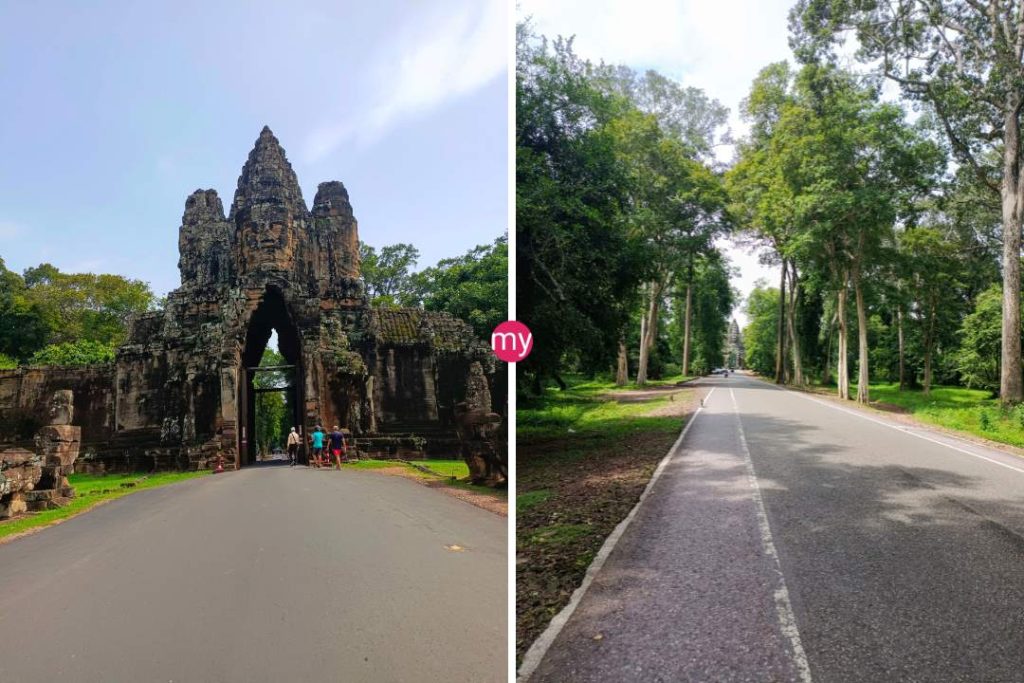
Tours to Angkor Wat from Siem Reap – Sunset Tours and the Golden Hour Magic
Angkor Wat technically doesn’t offer sunset views—you’re facing the wrong direction. But several nearby temples deliver spectacular golden hour experiences.
Top sunset locations:
- Phnom Bakheng (most famous, most crowded—limited to 300 visitors)
- Pre Rup (better views, fewer people)
- Angkor Wat’s outer galleries (beautiful side-lit stone carvings)
The Angkor Wat half-day sunset tour typically starts around 12:30 PM, giving you temple exploration time before finishing with sunset. It’s an excellent option if you hate early mornings or want to use mornings for other Siem Reap activities.
Pro tip: If you’re doing both sunrise and sunset on the same day, book a driver for the full day rather than two separate half-day tours. You’ll save money and have midday flexibility to return to your hotel for a pool break during the brutal afternoon heat.
Learn more: The secret sunset spot that rivals Angkor Wat
What if you could see Ta Prohm’s jungle ruins, Bayon’s 216 stone faces, AND catch sunset at Angkor Wat—all on your arrival day?
Our expertly-timed half-day tour makes it possible, with private guide, air-conditioned transport, and the secret sunset spot locals use. Starting at just $27.50 per person for groups of 6.
Tuk-Tuk Tours: The Classic Angkor Experience
The Angkor Wat tuk-tuk tour remains the most popular transport option—and for good reason. These three-wheeled vehicles perfectly balance comfort, cost, and authenticity.
Why tuk-tuks work so well:
- Open-air design provides natural ventilation (crucial in Cambodia’s heat)
- Easy temple access—tuk-tuks can park closer than cars at most sites
- Iconic photo opportunities
- Affordable (typically $20-25 for full-day rental)
- Supports local drivers directly
But let’s be honest—tuk-tuks have limitations. No AC means the 1-3 PM window gets uncomfortably hot. They offer minimal dust protection. And rain can be challenging (though most come with roll-down plastic covers).
For longer distances to outer temples like Beng Mealea or Koh Ker, consider upgrading to an air-conditioned car. The comfort difference over 80+ kilometers of sometimes-rough roads is substantial.
Guided Tours: Is Expert Commentary Worth the Extra Cost?
Here’s my hot take: yes, but only if you get a genuinely knowledgeable guide (not just a driver with basic English).
A proper Angkor guide should explain:
- The Hindu and Buddhist iconography in the carvings
- The construction techniques that still baffle engineers
- The historical context of different Khmer kings
- Conservation challenges and UNESCO efforts
- Stories behind specific bas-relief panels
The guided vs. self-guided Siem Reap tours comparison comes down to your interests. History buffs and first-time visitors benefit enormously from expert guidance. Return visitors or those who prefer independent exploration might prefer a driver-only arrangement with a good guidebook.
Budget for a quality guide: $30-50 per day on top of transport costs. Yes, it increases your total outlay—but the difference between seeing stones and understanding a civilization is worth every dollar.
Want guided expertise? Explore guided private tours of Bayon with local experts or discover behind the scenes Angkor temple tours.
Practical Tour Booking: What You Need to Know
Angkor Wat Ticket Requirements
Before booking any tour, understand the ticketing system. You need an Angkor Park pass to enter the archaeological zone.
Ticket options (2025-2026 pricing):
- 1-day pass: $37
- 3-day pass: $62 (valid within 10 days)
- 7-day pass: $72 (valid within 1 month)
Where to buy: The Angkor ticket office is about 4km from Siem Reap’s town center. New self-service kiosks speed up the process, but you’ll still need your passport.
Important: Can you buy Angkor Wat tickets online? Yes! The buy Angkor Pass online option launched recently and works smoothly.
What’s included: Entry to all main temples (included Beng Mealea which access can also be purchased separately at the entrance ticket office for $10), Koh Ker ($15 separate), and Phnom Kulen ($20 separate).
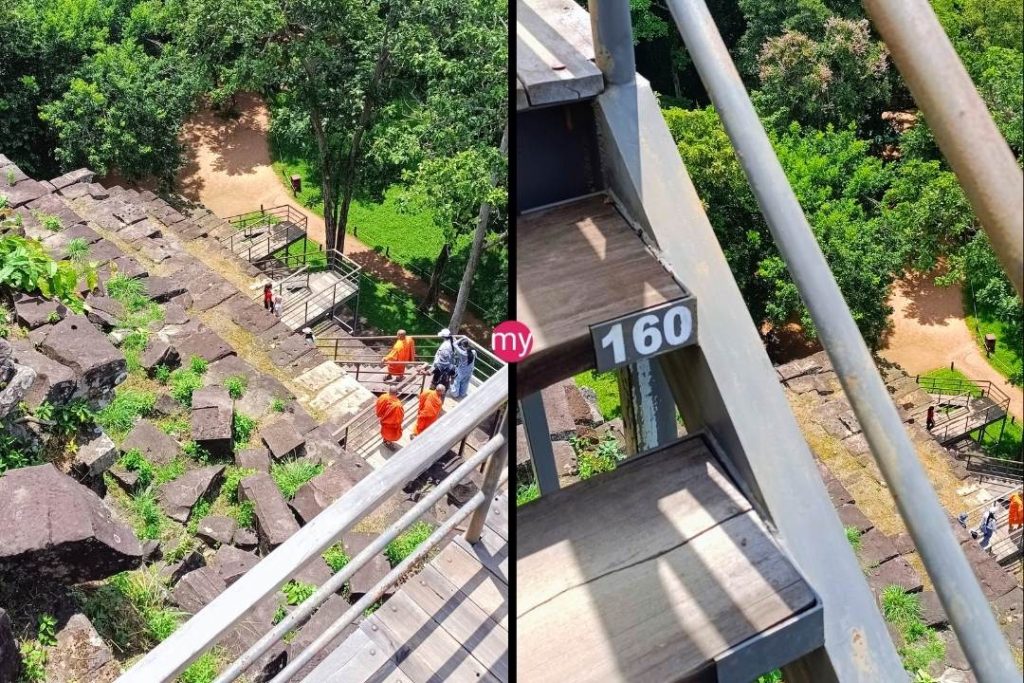
When to Book: Advance Planning vs. Last-Minute
High season (November-March): Book at least 1-2 weeks ahead Shoulder season (April-May, October): Book 3-5 days ahead Low season (June-September): Can often book day-before or same-day
Exception: Sunrise tours during peak season should be booked further in advance—popular guides fill up quickly.
I typically recommend booking at least your first day upon arrival, then deciding on additional days based on how you feel. Temple fatigue varies person to person.
What’s Included: Reading Tour Descriptions Carefully
Tour descriptions can be misleading. Here’s what to verify:
Transportation includes:
- Hotel pickup and drop-off (confirm your location is covered)
- Cold water and towels in vehicle
- Experienced tour guide
- Fuel and driver
- Parking fees at temples
NOT typically included:
- Angkor pass ($37-72 depending on duration)
- Temple guide services (often listed separately)
- Meals and drinks
Daily Timing: Early Birds vs. Night Owls
Sunrise tours (4:30 AM start):
- See temples in best light
- Beat afternoon heat and crowds
- Finish by noon for afternoon relaxation
- Challenging for non-morning people
Is 4 AM too early for Angkor Wat? Maybe. Is 8 AM too late for Angkor Wat? Depends on the season!
Late morning tours (9:50 AM AM start):
- Reasonable wake-up time
- Miss initial sunrise crowds
- Face heat during prime exploration time
- Better for multi-day visitors
Afternoon tours (12:30 PM start):
- Sleep in and enjoy morning
- Explore temples in harsh light
- End with sunset
- Hottest part of day
The premium late morning Angkor experience has grown popular among travelers who prioritize comfort over sunrise photos.
Want the honest truth about timing? Read: Things to know before seeing sunrise at Angkor Wat
Beyond Temples: Combination Tours from Siem Reap
Floating Village Tours
One of my favorite combinations pairs temples with cultural experiences. The floating village tour reveals a completely different side of Cambodia—communities living on Tonle Sap Lake.
Popular combinations:
- Morning: Angkor Wat temples
- Afternoon: Kampong Phluk tour (stilted village)
Or the reverse:
- Morning: Kompong Khleang floating village
- Afternoon: Smaller temples and sunset
This pacing prevents temple overload while adding cultural depth. Plus, the floating villages offer completely different photo opportunities.
The Angkor Wat to Siem Reap floating village route works as a logical one-day itinerary: temples in the morning when it’s cooler, floating village in the afternoon when the reflection and boat ride feel refreshing.
Cost comparison: Floating village tour price points
Countryside and Rural Tours
The Siem Reap countryside tour takes you into traditional villages where daily life hasn’t changed much in decades. You’ll see rice farming, traditional crafts, and stilted houses.
Best countryside combinations:
- Temples + rice paddy cycling
- Temples + traditional village lunch
- Temples + silk weaving demonstration
The rural Angkor temples escape and rural Angkor Wat bike tour escape offer active alternatives to vehicle-based touring.
Elephant Sanctuaries: Ethical Animal Encounters
Cambodia still has wild elephant populations in remote forests. The Siem Reap elephant sanctuary lets you observe (not ride) rescued elephants in semi-wild conditions.
The Kulen Elephant Forest and Kulen Mountain private tour combines ethical elephant observation with the sacred mountain, waterfalls, and reclining Buddha.
Important distinction: Choose observation-based sanctuaries over elephant riding operations. True sanctuaries focus on animal welfare, not entertainment.
Beng Mealea and Remote Temples
Once you’ve covered the main Angkor complex, remote temples offer incredible adventure. Beng Mealea temple tour experience takes you to a massive temple complex about 40km from Siem Reap—still largely unrestored and partially collapsed.
Walking through Beng Mealea feels like discovering Angkor must have felt to early explorers. Massive trees grow from galleries. Stone blocks lie scattered where they fell. And most remarkably, you’ll see maybe 20-30 other visitors total.
The Koh Ker and Beng Mealea guided tour combines two of Cambodia’s most dramatic remote sites. Koh Ker’s seven-tiered pyramid offers incredible views from the top—and you can actually climb it, unlike Angkor Wat’s central towers.
Timing beats equipment. Golden hour (6-7 AM and 4:30-5:30 PM) transforms ordinary scenes into magical images. Harsh midday light makes even Angkor Wat look flat.
People create scale. Empty temple shots look impressive but including a person shows the massive size of these structures.
Details beat wide shots. Everyone photographs the main temple facade. Skilled photographers capture specific carvings, weathered textures, root patterns, light streaming through doorways.
Low angles create drama. Shoot upward to emphasize tower height. Get down on the ground for reflection pools.
More professional techniques: Best photo spots in Angkor
Dress Code: What Actually Works
Yes, Angkor Wat has a dress code. But the bigger issue isn’t modesty—it’s surviving Cambodia’s climate.
Official requirements:
- Shoulders covered (sleeveless okay if wide straps)
- Knees covered
- No see-through clothing
What works best in practice:
- Lightweight, loose-fitting pants or long skirts
- Breathable cotton or moisture-wicking shirts
- Layers you can adjust (temples vary in sun exposure)
- Shoes you can easily slip on/off (you’ll do this repeatedly)
Detailed guidance: The quintessential guide to Siem Reap dress code
Avoiding Crowds: Strategic Temple Timing
Even during peak season, smart timing helps you find solitude:
Early morning (5:30-7:30 AM):
- Most crowds at Angkor Wat sunrise spot
- Other temples nearly empty
- Best light and cooler temperatures
Midday (11 AM-2 PM):
- Everyone returns to town for lunch
- Brutal heat but fewer people
- Good for covered galleries and shaded temples
Late afternoon (3:30-5:30 PM):
- Tour groups heading to sunset spots
- Main temples emptying out
- Beautiful side-lighting for photography
The avoid overtourism and crowding when visiting Angkor guide reveals which temples stay crowd-free even during high season.
Secret for tranquility: Find peaceful temples in Angkor
What About Sunrise—Is It Overhyped?
Controversial opinion: kinda, yeah.
Angkor Wat sunrise is spectacular. Truly magical. But you’re sharing it with 500-2000 other people (depending on season), many arriving hours early to claim prime spots. The experience feels more like a pilgrimage gathering than serene temple appreciation.
I still think first-time visitors should do it—it’s iconic for a reason. But understand what you’re signing up for: a crowded experience that requires sacrifice (brutal early wake-up) for a beautiful but brief moment.
Alternative approach: Do sunrise on your second or third day at a less-crowded location like Pre Rup. Then visit Angkor Wat mid-morning when crowds thin and you can actually explore without jostling for space.
Booking Your Tours to Angkor Wat from Siem Reap
Recommended Tour Packages
Based on years of observation and client feedback, here are consistently excellent tour options:
For sunrise experiences:
- Private Angkor Wat sunrise tour
- Exclusive Angkor Wat dawn experience
- Angkor Wat sunrise equinox tour (twice yearly special event)
For comprehensive coverage:
For specific interests:
- Exclusive Angkor tour experience (luxury focus)
- Siem Reap temples tour (temple emphasis)
- Siem Reap culinary tour (food + temples)
Quick booking: Book private Angkor sunrise tour online in seconds
Airport to Hotel Transfer
The Siem Reap new international airport private transfers operates from the new airport 51km from downtown (opened October 2023).
Transfer options:
- Airport shuttle bus: $8-9 per person
- Private taxi: $35-45
The old airport was just 8km from town, so transfers now take 50-60 minutes instead of 10 minutes.
More details: Siem Reap airport to hotel and New Siem Reap airport transfer
Beyond Your Tour: Making the Most of Siem Reap
Planning Multi-Day Stays
Most visitors spend 3-5 days in Siem Reap, balancing temple tours with other experiences.
Sample 5-day itinerary:
- Day 1: Arrive, rest, evening town exploration
- Day 2: Angkor Wat sunrise + small circuit
- Day 3: Grand circuit + sunset
- Day 4: Remote temples (Beng Mealea) or floating village
- Day 5: Countryside tour or spa day, evening departure
Comprehensive planning: How to spend 5 days in Siem Reap and Siem Reap travel itinerary
Quick stays: 48 hours in Siem Reap or Siem Reap tour for 1 night stay
Other Siem Reap Attractions
Temple-toured out? Siem Reap offers numerous non-temple activities:
Cultural experiences:
- Traditional Apsara dance performances
- Angkor National Museum
- Artisan workshops (silk weaving, silver crafting)
- Cooking classes featuring Khmer cuisine
Nature activities:
- Kulen Mountain waterfall
- Tonle Sap lake and floating villages
- Countryside cycling
- Bird sanctuary visits
Relaxation:
- Hotel pool time (crucial recovery between temple days)
- Traditional massage and spa
- Pub Street nightlife
- Riverside dining
Complete activity guide: Siem Reap activities and Siem Reap sightseeing
Final Thoughts: Choosing Your Perfect Angkor Adventure
After helping thousands of travelers plan their tours to Angkor Wat from Siem Reap, here’s what I’ve learned: there’s no single “best” tour. There’s only the best tour for you.
The couple celebrating their anniversary needs something completely different than the solo backpacker on a budget, the architecture student, or the family with young kids.
Start by being honest about what you want from this experience. Instagram photos? Historical understanding? Spiritual connection? Photography portfolio? Family memories? Adventure?
Then build your tour around that core desire—not what guidebooks say you “should” do.
Because here’s the secret: Angkor Wat reveals itself differently to everyone who visits. Some find magic in sunrise silence. Others prefer the challenge of climbing remote pyramid temples. And some travelers experience their most meaningful moment in a quiet gallery, alone with 800-year-old carvings.
Your perfect tour is waiting. It just needs someone to design it thoughtfully.
Ready to book your Angkor adventure? Explore these popular tour options:
- Private Angkor Wat sunrise tour – The classic experience done right
- 2-day complete Angkor experience – Perfect balance of coverage and pace
- Exclusive Angkor tours – Premium private experiences
- Angkor Wat small circuit tour – Maximum highlights in one day
Essential Resources for Planning
Before you go:
- Getting your Cambodia tourist visa
- Top things to know before you go to Siem Reap
- Cambodia entry regulations
Understanding the temples:
Weather and timing:
Brought to you by Dan and Mat, Your tour planners.
Featured
Explore more on My Siem Reap Tours
Koh Ker and Beng Mealea guided tour | Banteay Srei temple guided tour | Angkor Wat Sunrise tour | Private Angkor Wat Sunset Tour | Koh Ker and Beng Mealea guided tour | Morning Siem Reap floating village tour | Afternoon Siem Reap floating village tour | Private Angkor Wat special tour | Kulen Waterfall small group guided Tour | Private Angkor Wat mix temples photo tour
